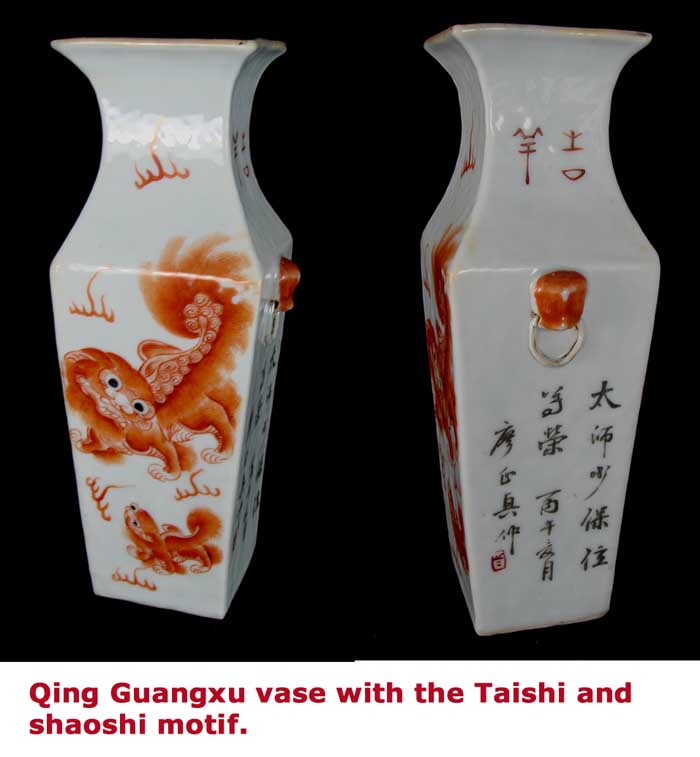
Lion
The lion is not indigenous to China. It's depiction in art form was largely related to Buddhism which was introduced into China during the Eastern Han Dynasty. Lion is believed to possess great power and is a symbol of protector of Buddhism. Stone lions were stationed in front of building for their perceived protective power. Lion-shape vessels were first found in ceramic form during the Jin Dynasty. Since then, lion has been a popular auspicious motif on Chinese art and craft. Lion dance was first introduced during the Song Dynasty. Motif of lion playing the embroidered ball also first appeared in the Song/Yuan period.


During the late Qing Dynasty, motif of a big and a small lion was popular on ceramics. The big lion represents tai shi (太师) and the small one, shao shi (少师). The chinese name for lion is shi (狮)and is a homophone for shi (师)meaning teacher or master. Tai shi and shao shi are titles of court position in ancient China. Tai shi is the teacher of the emperor and shao shi is that of the crown prince. Hence, the motif of a big and small lion expresses a wish for 'success and honour in officialdom'.
